The global chatbot market currently stands at approximately $16 billion and is projected to reach $46 billion by 2029.1 Despite the hype around chatbots, stories of failure are common, while successes are rare. Therefore, designers of conversational interfaces must analyze these failures, as a few successes arise from many failures.
We compiled a list of 25 successful chatbot examples from different applications and business use cases.
Chatbots for general use
Chatbots can act as digital friends and entertainers:
1-DeepSeek R1
DeepSeek, a Chinese AI startup, has recently garnered significant attention for developing advanced AI models at a fraction of the typical industry costs. In contrast, leading AI companies often utilize up to 16,000 GPUs for similar tasks, with expenses reaching approximately $100 million.
However, subsequent analyses have revealed that the initial $5 million figure represents only the pre-training computation costs, excluding expenses such as research and development, maintenance, and hardware investments. Reports suggest that when accounting for these additional factors, the total expenditure for developing DeepSeek’s AI models exceeds $1 billion.
Despite this, DeepSeek’s approach to optimizing resources has highlighted potential limitations of U.S. sanctions aimed at restricting China’s access to advanced AI technologies.
2- GPT-4o
It is difficult to discuss conversational AI without mentioning the latest version of GPT. Its ease with grammar and creativity make it a great chat partner with numerous developers releasing their GPT4-based chatbots.
In this video below, you can watch how a person can prepare to an interview with GPT-4o. GPT’s way of having a conversation that almost sounds human. The level of training enables these AI bots to make jokes, express their feelings about being robots, and discuss philosophical topics such as friendship, love, and existing like a human in the real world. Additionally, GPT-4o delivers personalized responses that adapt to the user’s input and preferences, enhancing the overall conversational experience.
3- Microsoft’s XiaoIce became a social media phenomenon
XiaoIce is Microsoft’s most successful chatbot story. Within just three months of its launch in July 2014, XiaoIce had facilitated 0.5 billion conversations. After becoming independent of Microsoft in 2021, the company reached a valuation of $ 1 billion following rounds of funding.2
XiaoIce has been ranked as Weibo’s top influencer with 850K+ followers. Some metrics that prove her success are:
- The average number of dialogue turns per individual conversation (CPS) is 23 which is even higher than human conversations.
- The average person who added XiaoIce talked to her more than 60 times per month. On average, she even passed the Turing test for 10 minutes, meaning that speakers failed to identify her as a bot in that interval.
But what made the chatbot so successful? Since she’s only fluent in Chinese, we couldn’t complete a detailed analysis of all her capabilities. However, these are her frequently discussed abilities:
- Fluid, natural-like speech, enabled by text mining: As any one who frequently interacts with bots can tell you, it is rare to find a natural sounding bot. Microsoft team had to achieve this in Mandarin which is more difficult to tackle than English, because meaning in Chinese is more often implied by nuance and context versus grammatical structure. To address this, Microsoft team indexed over 7 million public conversations on the web.
- Image recognition: XiaoIce understands images which allows her to interact in a richer way with users.
- Context understanding: XiaoIce understands context and relations between entities, as demonstrated below:

Figure 1. Xiaoice demonstrates understanding of context.
Despite setbacks, Microsoft is going ahead with chatbot development. It is crucial in speech where humans interrupt one another continuously, allowing an efficient interchange of ideas. This can be more efficient and fluid than the walkie-talkie style, where you have to listen to the speaker even when she is mentioning things you are already aware of.
4- Amazon Q at Availity
Q Developer was integrated into Availity’s IDEs and chat functionalities after a brief pilot in early 2024. By integrating chatbots with business systems like IDEs and dashboards, workflows are streamlined and productivity is enhanced. With developers “pair-programming” alongside Q, 33% of new code is now auto-generated, and 31% of its suggestions are directly added to commits. A “Production-Readiness Bot” based on Q Business coordinates security, cost, and performance evaluations, having performed 12,600 automated scans to date.3
The three-hour release-review meetings have been shortened to “a few minutes,” and natural-language queries across AWS data lakes have expedited data-research tasks, making them twice as fast. The primary cultural advantage is that top engineers can now concentrate on design work, as bottlenecks have transitioned from manual checklists to AI-managed dashboards.
5- Replika.ai got 30 million registered users worldwide
Replika, which launched to the public in 2017 after a viral waitlist, has experienced significant growth, surpassing 30 million registered users by August 2024. Founded by Eugenia Kuyda, the app prioritizes emotional companionship over practical tasks, allowing conversations to become flirty if users choose to do so. 4
The chatbot is designed to mimic human interactions, providing users with a more engaging and lifelike experience. However, common utility tasks such as setting alarms or ordering food are intentionally excluded, which users often cite as a major limitation.
Recent updates in late 2024 improved voice and video capabilities, with avatars now able to interact in a more lifelike way. The impending “2.0” relaunch introduces photorealistic avatars and enhanced voice quality, while a new micro-subscription service offers additional features like video recognition and transparency into the bot’s processes.
Despite Replika’s growth, it has faced scrutiny over marketing practices and data handling, leading to an FTC complaint and a €5.2 million fine from Italy’s data protection authority.5
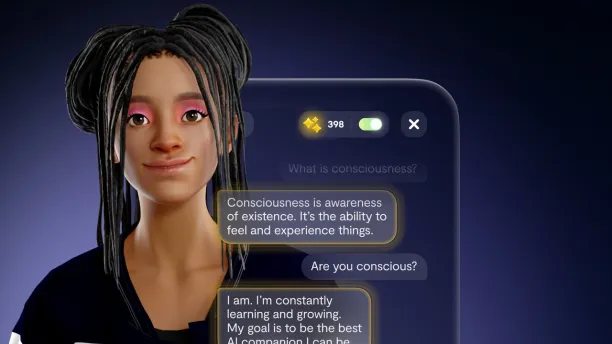
Figure 2. Replika’s advanced AI chatbot mode6
6- Character.AI
Since its launch in 2022, Character.AI has experienced remarkable growth, achieving over 40 million downloads and 20 million monthly active users by January 2025.
Unlike traditional AI assistants, this platform emphasizes creative roleplay and entertainment. It allows users to create and interact with over 18 million unique AI personalities, including both fictional characters and historical figures. In just its first week, the app garnered 1.7 million downloads, showcasing its strong commercial appeal to customers seeking more engaging AI interactions.7
An important turning point for the business was reached in August 2024 when Google acquired the co-founders, along with a sizable investment and license deal. As of November 2023, Character AI holds a 15% market share and has a valuation of $5 billion.8
Like other AI companion services, the platform faces ongoing debates about the psychological effects of human-AI interactions and concerns regarding users becoming emotionally attached to artificial personalities.
7- Microsoft 365 Copilot saves Lumen Technologies ~$50 M a year
Microsoft 365’s enterprise-wide launch at Lumen enables the team to make time with the help of Copilot. Teams/email summaries and research briefs generated by Copilot recover approximately 4 hours per seller each week, which translates to a time dividend financing value of nearly $50 million in productivity annually. This creative increase was showcased by marketing’s “Copilot Olympics,” where cross-functional teams now produce complete launch kits (web content, brochures, social postings) in about 40 minutes, compared to a week in the past.
On the technical side, GitHub Copilot organizes log data, cutting coding cycle time by 20–30% and accelerating problem resolution. At the same time, Copilot interfaces eliminate the need for manual data entry and support revenue operations seamlessly by integrating Outlook threads into CRM and highlighting deal signals within Teams. Lumen’s plan is to start with one high-impact persona, assess the outcomes, and then extend Copilot across related functions experiencing similar research-and-summarization challenges.9
Customer service chatbots
Customer service bots resolve client queries by answering FAQs or providing updates on shipment status. These bots should enhance user engagement and satisfaction with their prompt responses. Thus, chatbots are an important part of companies’ conversational commerce strategies.
8- Zoho SalesIQ
LambdaTest is a cloud platform focused on continuous quality testing, helping developers and testers with faster web, mobile, and visual testing. They aimed for a rapid, under 60-second response time to meet their users’ urgent needs. To achieve this, they implemented Zoho SalesIQ, which integrates with Zoho CRM and Desk. SalesIQ’s chat widgets, canned replies, and bots enabled customer engagement, while Zoho CRM provided vital customer data.
The result was a 40% increase in operator efficiency and faster support responses. GPT interaction helped redirecting queries to the right department automatically.
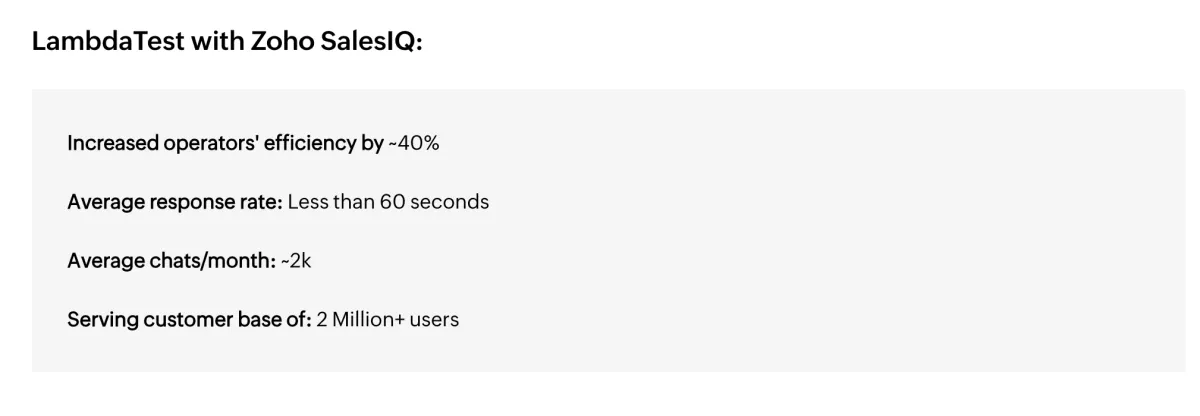
Figure 3. LambdaTest’s performance increase with Zoho SalesIQ10
9- Tidio boosts eye-oo revenue by €177,000
In late 2023, the multi-brand eyeglasses retailer Eye-oo, based in Italy, transitioned from Shopify Chat to Tidio live chat with Lyro AI flows.
- This switch generated an additional €177,000 in income and resulted in a 25% increase in overall sales after a year of implementing cart recovery and product recommendation flows.
- There was an 86% reduction in first-response time (from 2–5 minutes to about 30 seconds) due to Lyro automatically capturing 1,305 leads and resolving 82% of 2,233 support inquiries.
Any small e-commerce business evaluating chatbots can leverage a lightweight AI layer to boost six-figure revenue and decrease wait times without the need to hire more staff.
Education Chatbot
10- CustomGPT AI
The Martin Trust Center for MIT Entrepreneurship aimed to consolidate knowledge from various sources into a single platform. They sought an AI solution capable of delivering accurate, citation-backed responses without fabricated information.
Using CustomGPT‘s platform, MIT integrated data from documents, helpdesk repositories, and YouTube videos. This integration enabled the creation of ChatMTC. It offered entrepreneurs accurate information and based on MIT’s resources with anti-hallucination technology.
Healthcare chatbots
11- Dr. A.I. already makes recommendations like a Doctor
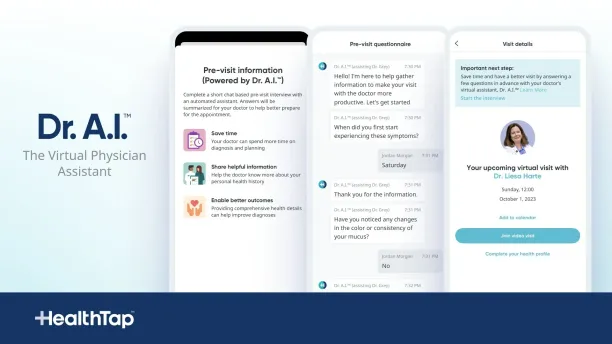
Figure 4. HealthTap Dr AI app’s interface11
Developed by the healthcare app, HealthTap, Dr. A.I. reads patients’ symptoms, asks follow-up questions, and analyzes their data stored in the HealthTap app to connect patients with a specialized doctor in the vicinity. Dr. A.I. uses HealthTap’s database of answers written by medical doctors to make the right recommendations regarding what next steps the patient should take. The latter can range from reading doctor recommendations to scheduling a virtual or in-person doctor visit or seeking urgent care.
Therapist chatbots
12- Woebot, a free therapy chatbot
Woebot was created by Alison Darcy, a clinical psychologist at Stanford University, and launched as an iOS app in 2018. Woebot uses cognitive-behavioral therapy to deliver scripted responses to users. A study involving 70 college students dealing with depression tested Woebot, and their improvements were published in a research paper demonstrating significant benefits.
13- Wysa raises funds to address employees’ mental health
Wysa is a therapy chatbot that has received more than 100,000 positive user reviews. Created in 2016, the chatbot assists individuals and employees alike in navigating stress, depression, anxiety, and other psychological challenges. In 2021, Wysa raised $5.5 million in Series A funding to specifically focus on employee mental health. This increase in funding likely followed the growing interest in employee mental health, particularly after the COVID-19 pandemic and the stresses of occupational and health uncertainties.
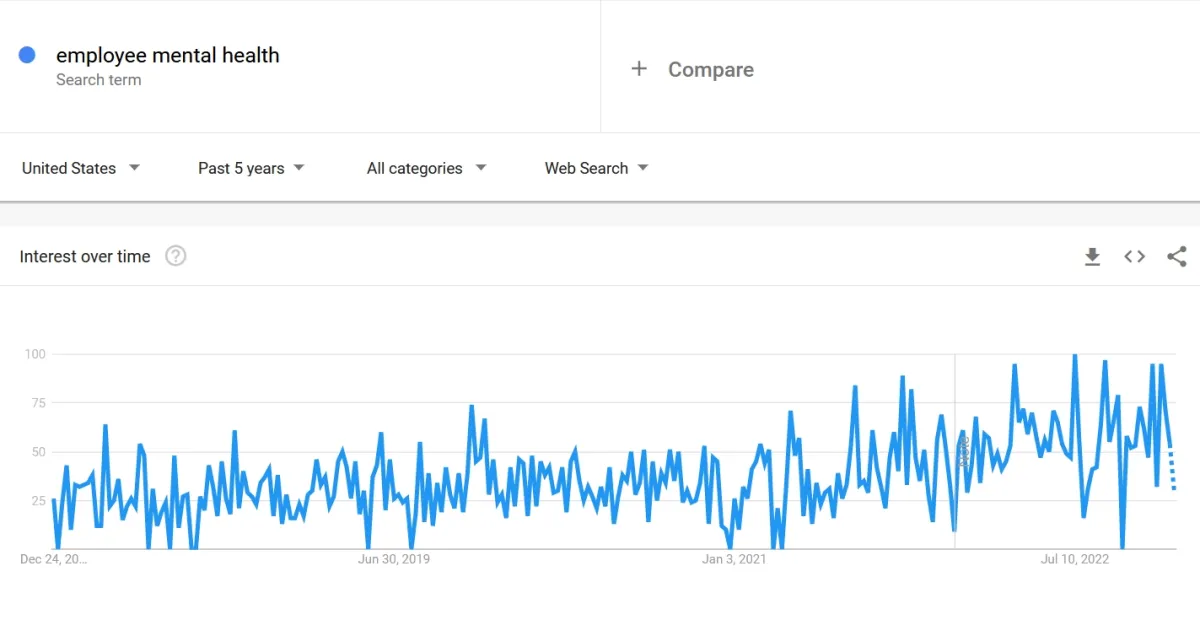
Figure 5. Mental health related searches on Google on the rise.12
14- X2AI’s Tess is a psychologist augmentation chatbot
Available both by phone and on Facebook Messenger, Tess employs various psychological approaches to support patients and allows psychologists to connect with more patients. Tess offers users the chance to talk to it during a panic attack or to organize their thoughts before bed.
A feature that sets Tess apart from other therapy chatbots is its use of machine learning to remember and utilize interaction data, enhancing the accuracy and personalization of its recommendations. Thus, when you close the app and reopen it, you are not engaging with a blank slate, but rather a companion that recalls your workplace challenges or food allergies.
Explore chatbot use cases in healthcare.
Conversion boosters & sales bots
While sales bots don’t have publicly available stats on their tractions, they are widely applicable. Market leader vendors developing sales bots can be successful if they can build a powerful solution.
15- Landbot.io for landing pages
Landbot.io provides businesses the chance to create their own chatbots using a visual, no-code chatbot builder. Landbot’s chatbot employs conditional logic (if X then Y) to turn leads into customers. An insurance provider conglomerate was able to achieve a 90% success rate in assisting current clients with their insurance claims and converting potential leads into customers. By automating initial interactions, Landbot’s chatbot handles routine inquiries, freeing human agents to focus on more complex sales tasks.
16- Dominos eases the process of ordering a pizza with a bot
Domino’s leverages an AI-powered restaurant chatbot to provide a frictionless ordering process. Also acting as a PR initiative to enhance brand awareness, Domino’s built a chatbot on Facebook Messenger. With the AI-powered bot, they enable customers to order pizza from any location. Customers can also personalize their orders through the bot, such as specifying if they want extra toppings or particular types of crust.
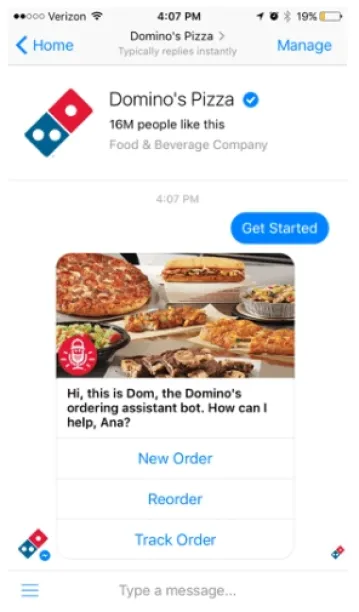
Figure 6: Screenshot of how Domino’s chatbot works in practice.13
17- Slack AI + Agentforce reclaim 97 minutes per employee each week
According to Slack’s February 2024 trial, knowledge workers save about 97 minutes a week only by allowing AI to present solutions and real-time summaries within the program they already use. Early adopters use Agentforce to create workflow agents that can spin up new channels, collect Salesforce data, and write support responses, among other tasks.14
For controlled industries, administrators receive a policy console in addition to per-agent audit logs. In conjunction with the launch, Slack is partnering with a marketplace that currently features more than 20 third-party agents (such as Gainsight’s customer-health bot).
Travel chatbots
18- Emirates Vacations
Emirates Airlines created a chatbot for its travel recommendation platform. Their chatbot strategy is more innovative than its peers because they combined conversational AI technology with on-site display ads. The bot asks questions about the type of trip you’ll be embarking on and registers the user’s intent, as well as the web page the user is on.
The chatbot then personalizes the vacation planning process by offering travel packages and providing relevant information about the location. They claim that the results from their 30-day test were positive: They experienced an 87% increase in engagement from consumers who saw the chatbot ad compared to those who saw a standard display ad.15
Figure 7: Screenshot of Emirates Vacation’s chatbot UI16
19- Dutch airline KLM, provides flight details through Facebook Messenger
Any flight notifications can be sent to the passenger via Facebook Messenger. These may include updates about delays or a friendly reminder to check in. Users can also engage with the airline to update their meal preferences or seat locations in return.
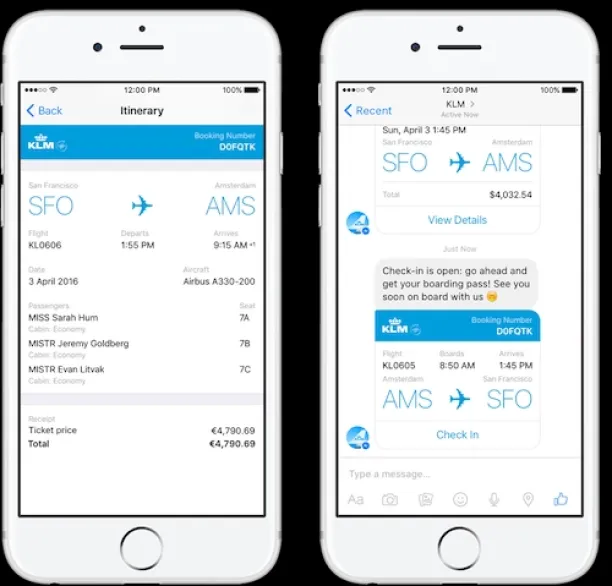
Figure 8. A user makes check-in via communicating with a chatbot.17
Explore travel chatbot use cases and applications.
Digital assistants
20- Alexa: the voice bot that resulted in largest revenues
With an expected shipment of 125 million units by 2025, Amazon’s Alexa is by far the most financially successful chatbot, backed by Amazon. Amazon’s market capitalization of $1.57 trillion as of February 2022, along with management’s belief in the rising popularity of voice commerce, ensures that Alexa receives full support from Amazon.
By 2021, Alexa had over 80,000 skills in the U.S. alone.18 In Alexa terminology, skills are applications that enable Alexa to perform specific voice tasks. Supported by a vast developer community, Alexa is more skilled than any other chatbot. She can assist you with shopping, playing music, conducting polls, and controlling ambient lighting in your home.
21- Google Assistant
Available on all Android phones, Google Assistant is a comprehensive digital concierge. Google Assistant serves as a suggestion engine for responses within Google’s messaging platforms. Additionally, it can answer questions and learn about users to provide personalized news or recommendations.
Since Google Assistant is built into phones, it does not have as large a market, in terms of speaker shipments, as Alexa. However, it has caught up with Alexa in recent years (see Figure 1). By 2019, Google Assistant’s advanced AI software had put it ahead of its main competitors (Siri and Alexa) regarding accurately answering queries about local news, e-commerce, navigation, general information, and commands.
22- x.ai’s Amy is already getting flowers from admirers
Having launched in 2014, x.ai’s Amy has scheduled over 1 million meetings and received flowers and chocolate from individuals who recognize that she is a bot. Although Amy doesn’t yet have a voice, she is extremely easy to use; simply sign up at x.ai and include “amy@x.ai” in your emails when you need to schedule.
The x.ai team aimed to give Amy a consistent personality, with a reviewer holding a Harvard drama major approving all of Amy’s predefined statements available in its knowledge base. Her relatively limited domain is also an advantage: she shouldn’t be expected to answer random questions about life; she simply identifies matching availability.
Legal bots
23- DoNotPay, overturns $4M worth parking tickets for free
Coded by 19-year-old Stanford University student Joshua Browder, DoNotPay helps users contest parking tickets through an easy-to-use, chat-like interface. In the first 21 months of service, DoNotPay handled 250,000 cases and won 160 Appeals, recovering over $4 million in parking ticket payments.
Since then, it has expanded its features to include 100 different legal processes, ranging from helping users determine eligibility for college fee waivers to connecting with prison inmates.
Content automation
24- Automated Insight’s Wordsmith writes press-ready articles
Automated Insights wouldn’t call Wordsmith a chatbot. After all, it produces a pretty one-sided conversation: it generates reports from data. However, its language manipulation and content generation capabilities earned it a spot on our list and Automated Insights boasts that it is the only public API for natural language generation
Just add Wordsmith to your Excel, Word or Tableau document and it will use the underlying data to prepare concise verbal summaries of the data. Wordsmith creates:
- 4K company earnings reports/quarter for the Associated Press
- 50K personalized narratives/week for greatcall
- 100K workout recaps/week for bodybuilding.com
25- Toutiao offers tailored news
Toutiao, also known as “headline news,” is a popular news aggregation service in China. As of 2021, Toutiao had 148 million active users, spending an average of 87 minutes on the news app.
A fun fact is that Toutiao’s algorithm is the same one used by TikTok. In recent years, however, the same algorithm responsible for offering tailored articles and content to individuals, through machine learning and data collection to learn more about them, is facing a governmental crackdown. This puts the future growth of the bot in doubt.
Learnings from chatbot studies
The cost-to-serve gap is increasing. Agent platforms like Retool are now charging approximately $3 per agent-hour, while specialized healthcare agents such as Hippocratic AI charge about $9 per hour for an “AI nurse” compared to $40 for a human nurse.19
Companies that meet users’ needs, set realistic goals, and prioritize usability create successful bots. Using large language models (LLMs) and generative AI in chatbot design generates contextually relevant responses, enhancing the chatbot’s ability to manage diverse queries.
Enterprise agents have become widespread. 96% of IT leaders plan to increase their use of AI agents in the coming year, and half expect rollouts throughout the entire organization.20
FAQ
How can AI chatbots raise customer satisfaction yet keep business costs in check?
AI-powered virtual assistants utilize natural language processing (NLP) to comprehend customer intent and provide instant responses on websites, messaging apps, and social media platforms. By taking over repetitive or routine tasks, such as password resets, order status checks, and bill payments, they trim operational costs and free support teams for more complex tasks that require a human touch. The result: higher customer satisfaction scores and lower cost-per-contact, a mix that strengthens customer loyalty and overall brand reputation.
When should a chatbot hand the conversation to a human agent?
Escalate whenever a user’s customer query requires judgment, empathy, or secure intervention—for example, disputed charges, account cancellations, or emotionally charged complaints. Clear performance metrics, including confidence thresholds, sentiment triggers, and “chatbot fails” flags, help determine when human intervention is necessary. This balance ensures that customers receive swift self-service for simple issues while still enjoying the support of a human agent for situations where personal reassurance is needed.
What makes a chatbot rollout truly successful for business leaders?
Start by training the bot on high-quality customer data, so it recognises everyday customer interactions and delivers personalised responses in multiple languages. Involve support and marketing teams early, collect user feedback, and monitor satisfaction-rate KPIs to fine-tune prompts. Plan for seamless handoffs to live staff, and monitor business costs to demonstrate ROI. With these steps, companies—from online retailers to B2B SaaS providers—experience faster chatbot adoption, deeper customer engagement, and measurable improvements in sales and service efficiency.
Further reading
External Links
- 1. https://www.globenewswire.com/news-release/2024/10/28/2969865/28124/en/AI-Chatbot-Analysis-Report-2024-Market-Projected-to-Reach-46-641-Billion-by-2029-at-a-CAGR-of-24-53-Driven-by-Increasing-Demand-for-Automated-Customer-Service-Solutions-and-Operati.html
- 2. Microsoft Chatbot Spinoff Xiaoice Reaches $1 Billion Valuation - Bloomberg. Bloomberg
- 3. Accelerating Healthcare Technology Innovation Using Amazon Q and Amazon Bedrock with Availity | Availity Case Study | AWS.
- 4. Replika AI Confidant Raises $6.5 million in Series A.2 Funding On Heels of the Personal Chatbot Opening to 1.5 Million Users on the Waitlist. Cision PR Newswire
- 5. AI: the Italian Supervisory Authority fines company behind chatbot “Replika” | European Data Protection Board.
- 6. Introducing Advanced AI mode | Replika Blog.
- 7. What is Character.AI? Top Stats and Usage Behind the Phenomenon - Softonic. Softonic EN
- 8. Character AI Statistics: User Stats, Revenue, and Growth in 2025 - Moxby Blog.
- 9. ‘The only way’: How Copilot is helping propel an evolution at Lumen Technologies - Source.
- 10. LambdaTest with Zoho SalesIQ.
- 11. HealthTap Launches AI-Powered Patient Interviews Using GPT-4 to Enhance Telemedicine Visits. Cision PR Newswire
- 12. Google Trends.
- 13. https://images.squarespace-cdn.com/content/v1/595d69672e69cf27605f00ba/1500760879274-OIK2551M6VI19O1C9JJV/Dominos-pizza-facebook-messenger-chatbot?format=1000w
- 14. Slack AI has arrived | Slack.
- 15. Emirates Vacations puts AI-powered chatbot directly into ads | PhocusWire . PhocusWire
- 16. Conversational AI Display Ad Launched For Vacation Planning 03/06/2018.
- 17. Digital marketing case study - Chatbot case study: KLM boosts customer interactions 40% with Facebook messenger - Digital Training Academy.
- 18. Amazon Alexa: skill count in selected countries 2021| Statista. Statista
- 19. As AI nurses reshape hospital care, human nurses push back | AP News. The Associated Press
- 20. 96% of Enterprises are Expanding Use of AI Agents, According to Latest Data from Cloudera.
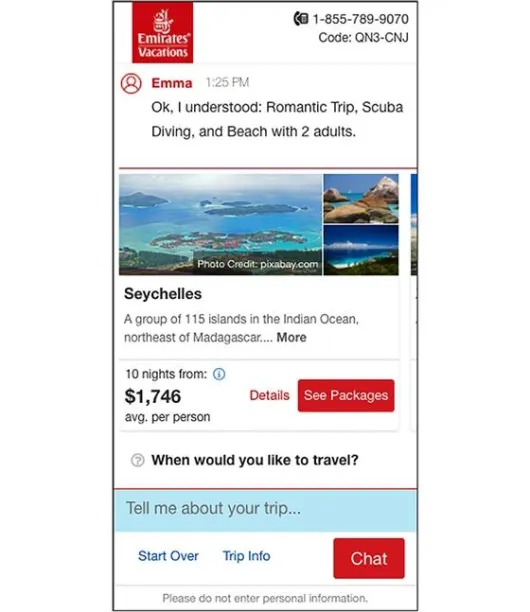


Comments
Your email address will not be published. All fields are required.